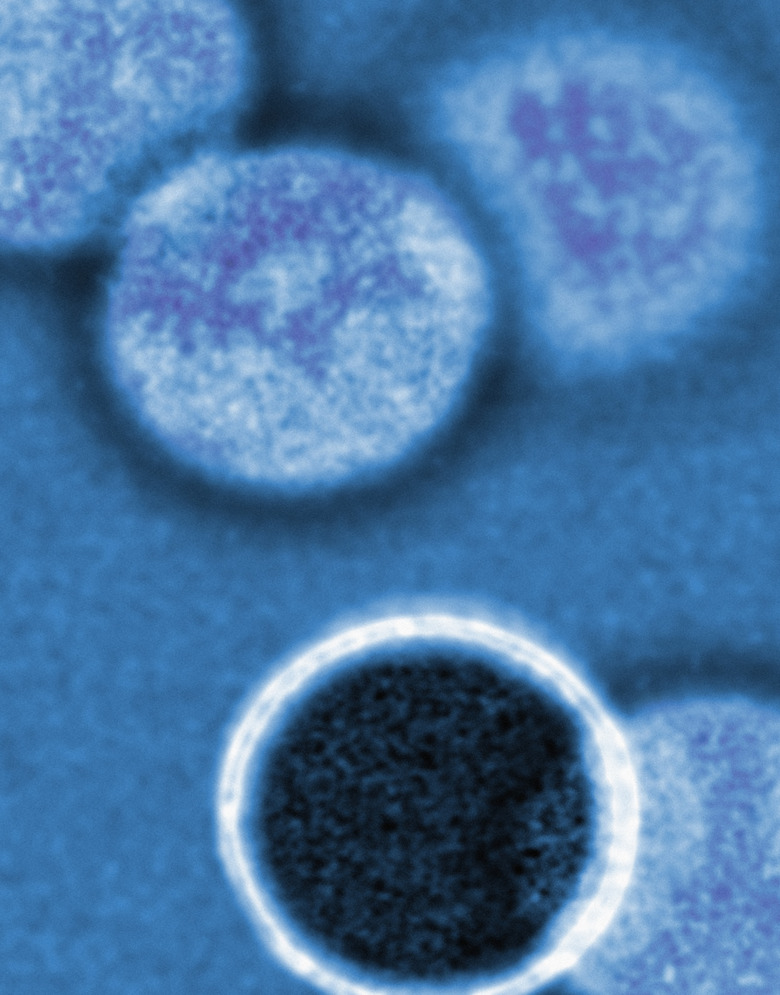What Are Concentration Gradients In Microbiology?
A cell has many duties to perform. One of its most important functions is to maintain a healthy environment within the cell. This requires controlling the intracellular concentrations of various molecules, such as ions, dissolved gases and biochemicals.
A concentration gradient is a difference in the concentration of a substance across a region. In microbiology, the cell membrane creates concentration gradients.
Gradient and Concentration Definition (Biology)
Gradient and Concentration Definition (Biology)
Before we get into how concentration gradients work in microbiology, we need to understand the gradient and concentration definition (biology).
A "concentration" refers to the amount of a material (usually called a solute) that's found usually in a solution. So, for example, if you have a certain amount of sugar in the cytosol of a cell, the sugar would be the solute and the cytosol (where the sugar is) is called the "solvent" in the solution they make together. The concentration of sugar would mean the amount of sugar found in the cytosol of that cell.
A "concentration gradient" simply means there's a difference in concentrations in two different places. For example, you could have many molecules of sugar inside a cell and very few outside the cell. That would be an example of a concentration gradient.
When a concentration gradient forms, molecules want to flow from areas of high concentration to low concentration in order to lessen, or get rid of, the gradient. However, sometimes gradients are necessary for structure/function of cells. Continuing with the sugar example, the cell wants to keep the sugar in the cell for use instead of allowing it to flow out of the cell.
The Cell Membrane
The Cell Membrane
A cell membrane is composed of double layer of phospholipids, which are molecules containing a phosphate head and two lipid tails. This is called the phospholipid bilayer. The heads align along the inner and outer boundaries of the membrane, while the tails fill the space in between.
The cell membrane has selective permeability — the tails prevent large or charged molecules from diffusing through the cell membrane, while small and fat-soluble molecules can slip through. Selective permeability can create concentration gradients across the membrane that require special transmembrane proteins to overcome while still allowing for necessary small and fat soluble molecules to diffuse without using up energy.
Passive Diffusion
Passive Diffusion
Small, nonpolar molecules can diffuse through a cell membrane based on the molecule's concentration gradient. A nonpolar molecule has a relatively uniform and neutral electric charge throughout.
For example, oxygen is nonpolar and diffuses freely across a cell membrane. Blood cells transport oxygen molecules to the spaces surrounding cells, creating a relatively high concentration of O2. A cell continuously metabolizes oxygen, creating a concentration gradient between the interior and exterior of the cell. O2 diffuses through the membrane because of this gradient.
Water and carbon dioxide, though polar, are small enough to diffuse through the cell membrane unassisted.
Ion Channel Receptors
Ion Channel Receptors
An ion is an atom or molecule with a different number of protons and electrons — it carries an electric charge. Certain ions, including those of sodium, potassium and calcium, are important to the normal functioning of a cell. Lipids reject ions, but the cell membrane is peppered with proteins called ion channel receptors that help control ion concentrations within the cell.
The sodium-potassium pump uses the cell's energy molecule, adenosine triphosphate (ATP), to overcome the concentration gradient, allowing the movement of sodium out of the cell and potassium into the cell. Other pumps rely on electrodynamic forces rather than ATP to transport ions across the membrane.
Carrier Proteins
Carrier Proteins
Large molecules cannot diffuse through the lipids in the cell membrane. Carrier proteins within the membrane provide the ferry service, using either **active transport** or **facilitated diffusion**.
Active transport requires the cell to use ATP to move the large molecule against the concentration gradient. Receptors within active transport proteins bind to specific passenger, and ATP allows the protein to translocate its passenger across the membrane.
Facilitated diffusion doesn't need biochemical energy from the cell. Carriers using facilitated diffusion act as gatekeepers that open and close based on concentration and electrical gradients.
Cite This Article
MLA
Finance, Eric Bank, MBA, MS. "What Are Concentration Gradients In Microbiology?" sciencing.com, https://www.sciencing.com/concentration-gradients-microbiology-17953/. 21 May 2019.
APA
Finance, Eric Bank, MBA, MS. (2019, May 21). What Are Concentration Gradients In Microbiology?. sciencing.com. Retrieved from https://www.sciencing.com/concentration-gradients-microbiology-17953/
Chicago
Finance, Eric Bank, MBA, MS. What Are Concentration Gradients In Microbiology? last modified August 30, 2022. https://www.sciencing.com/concentration-gradients-microbiology-17953/
